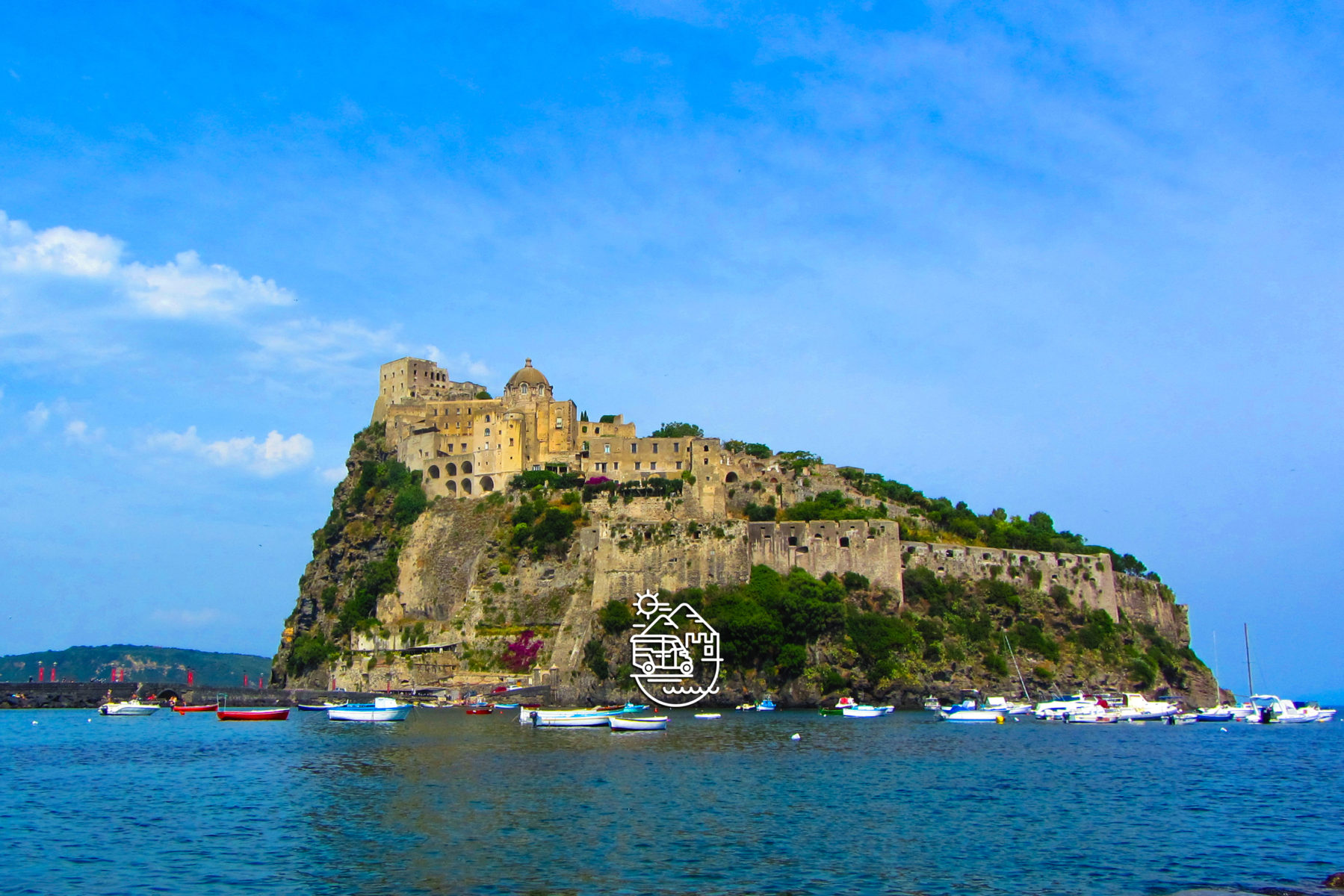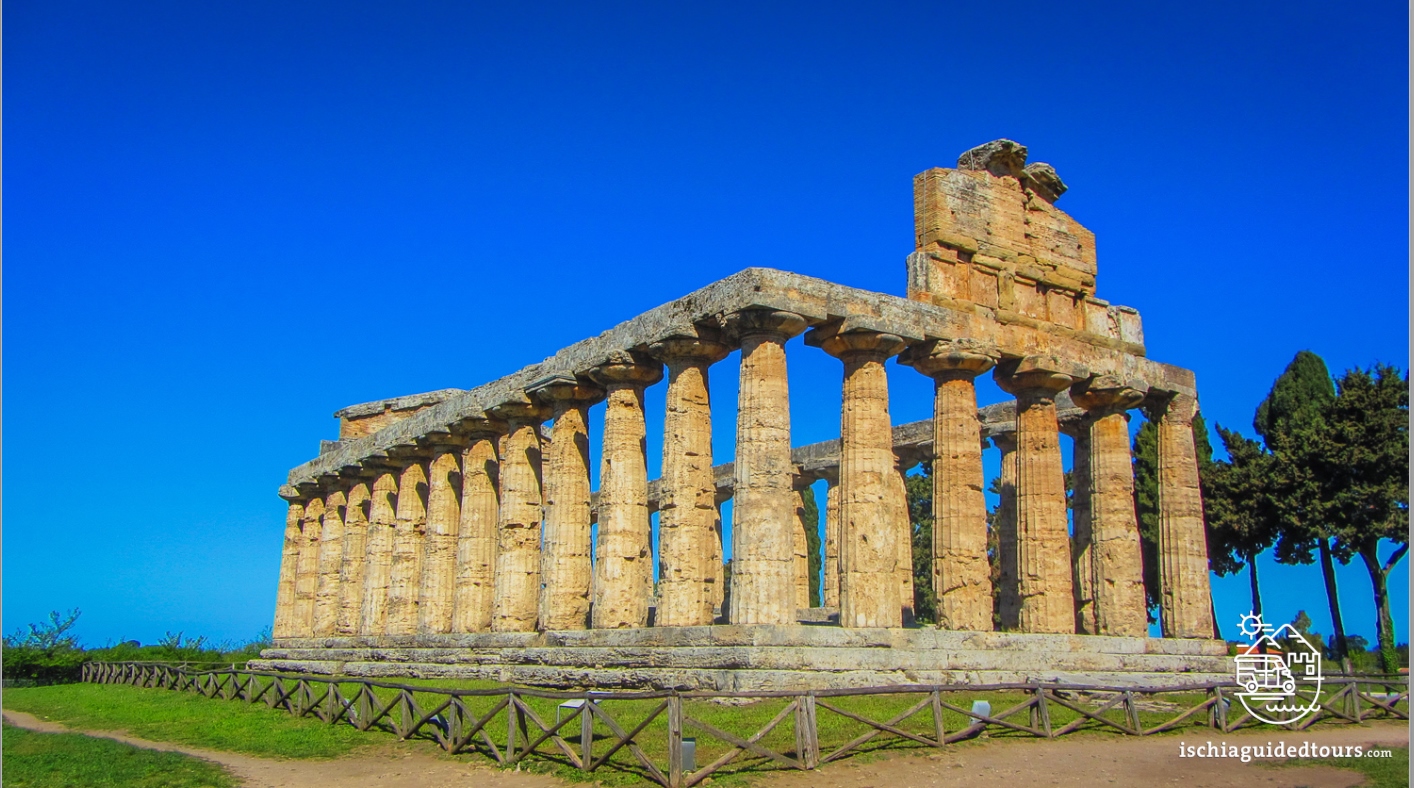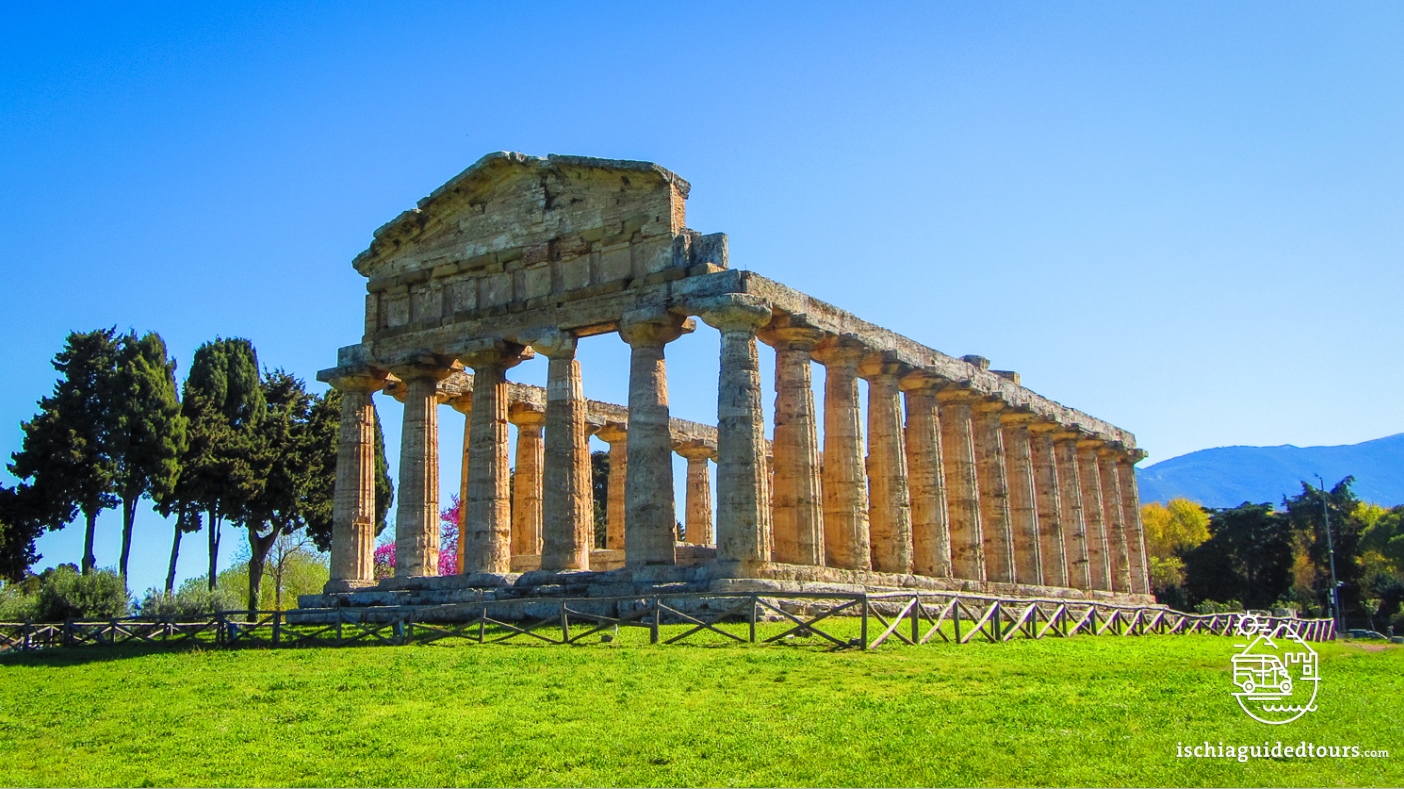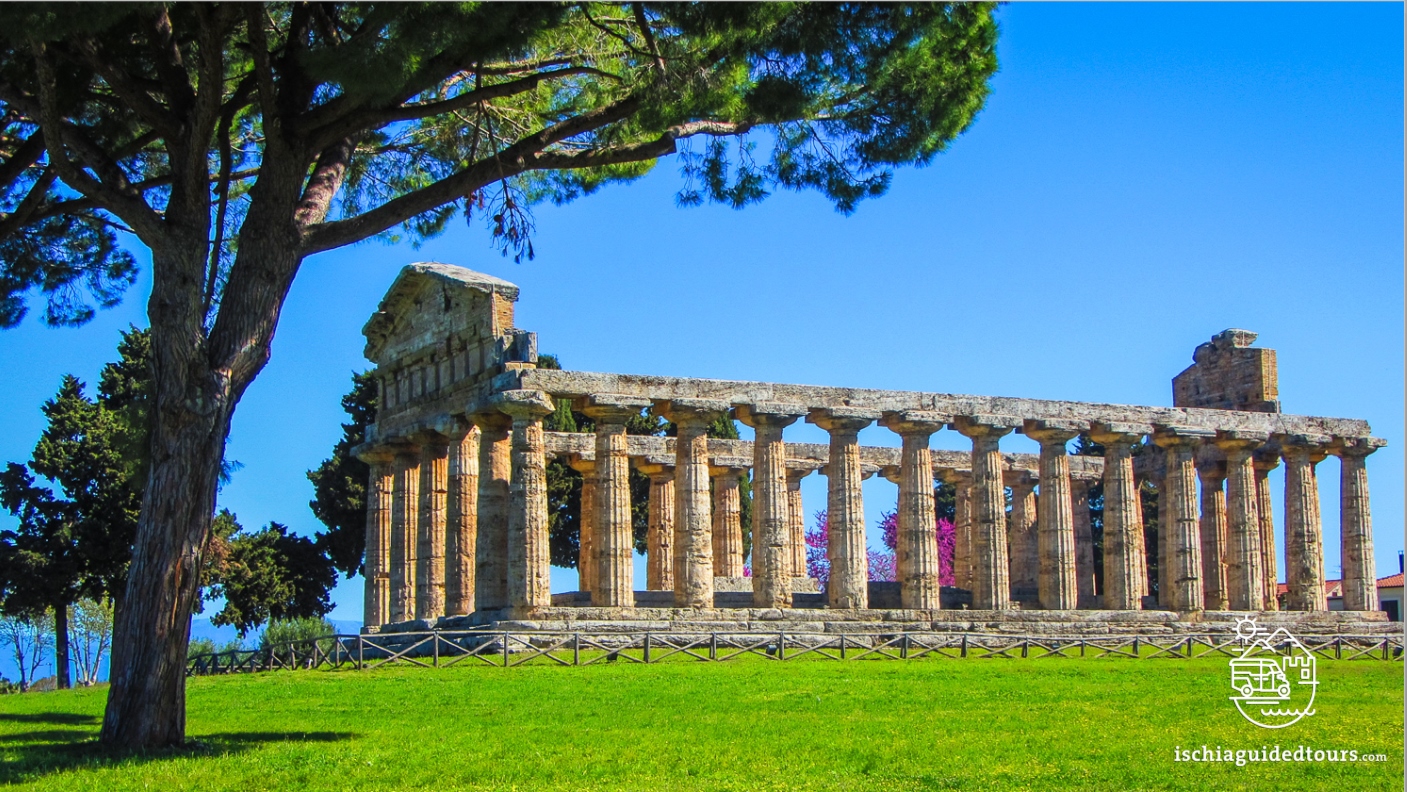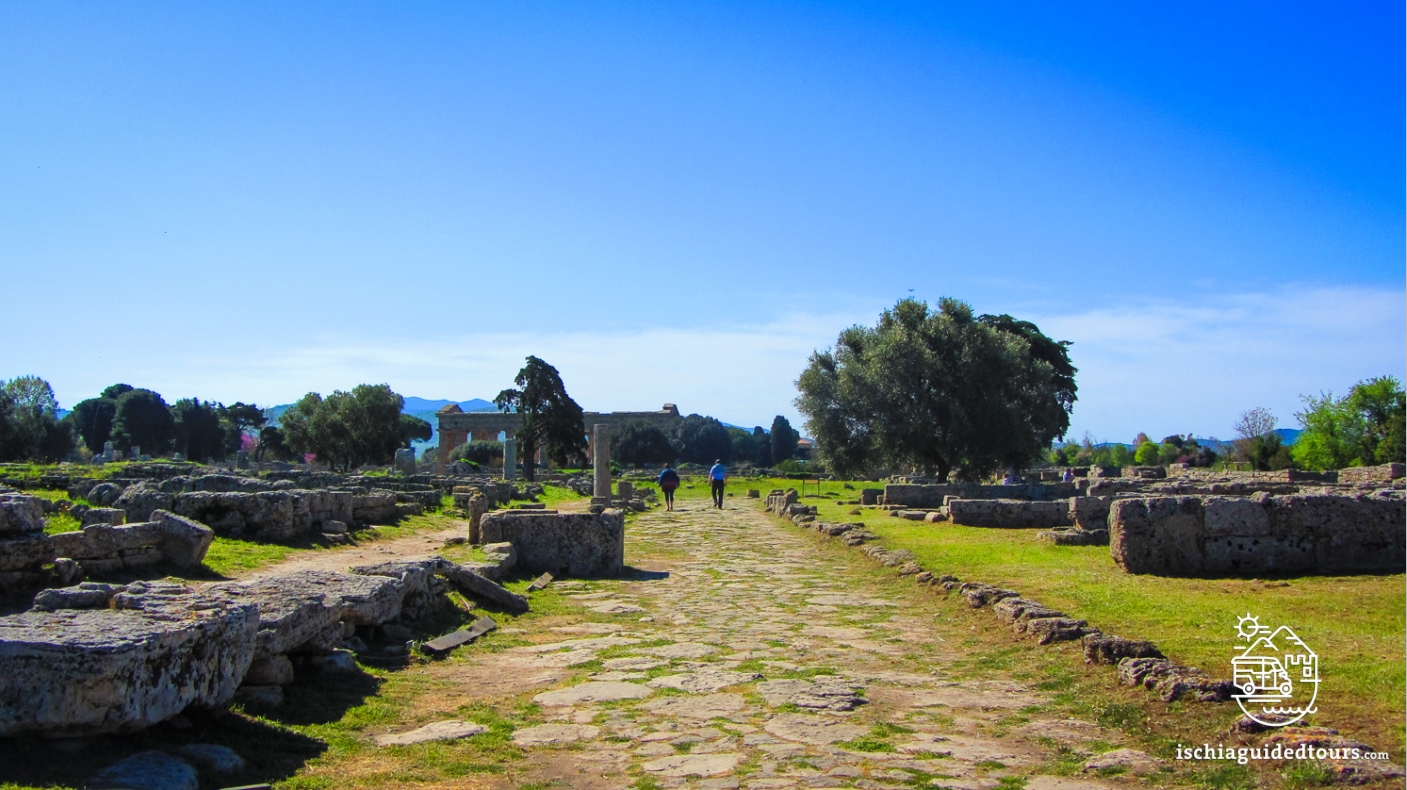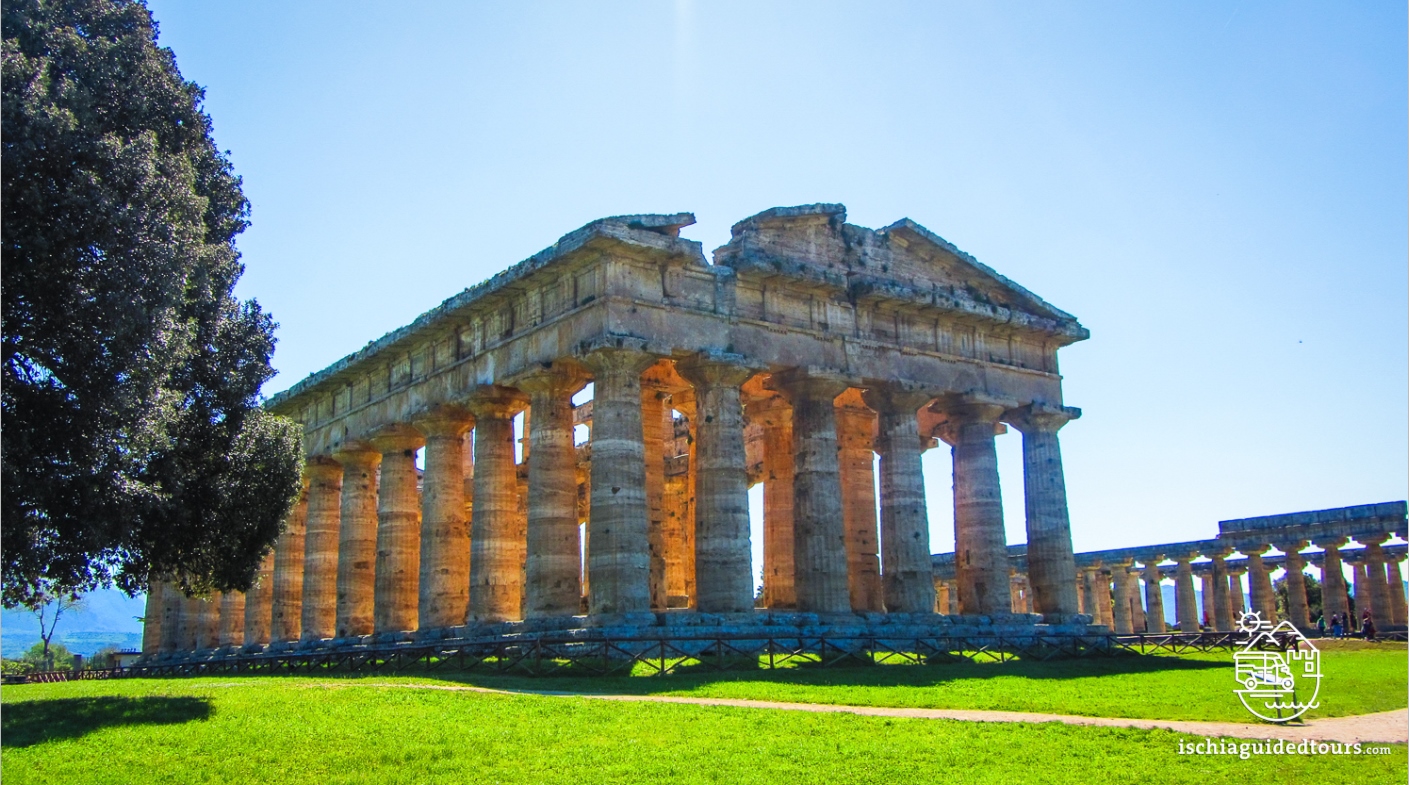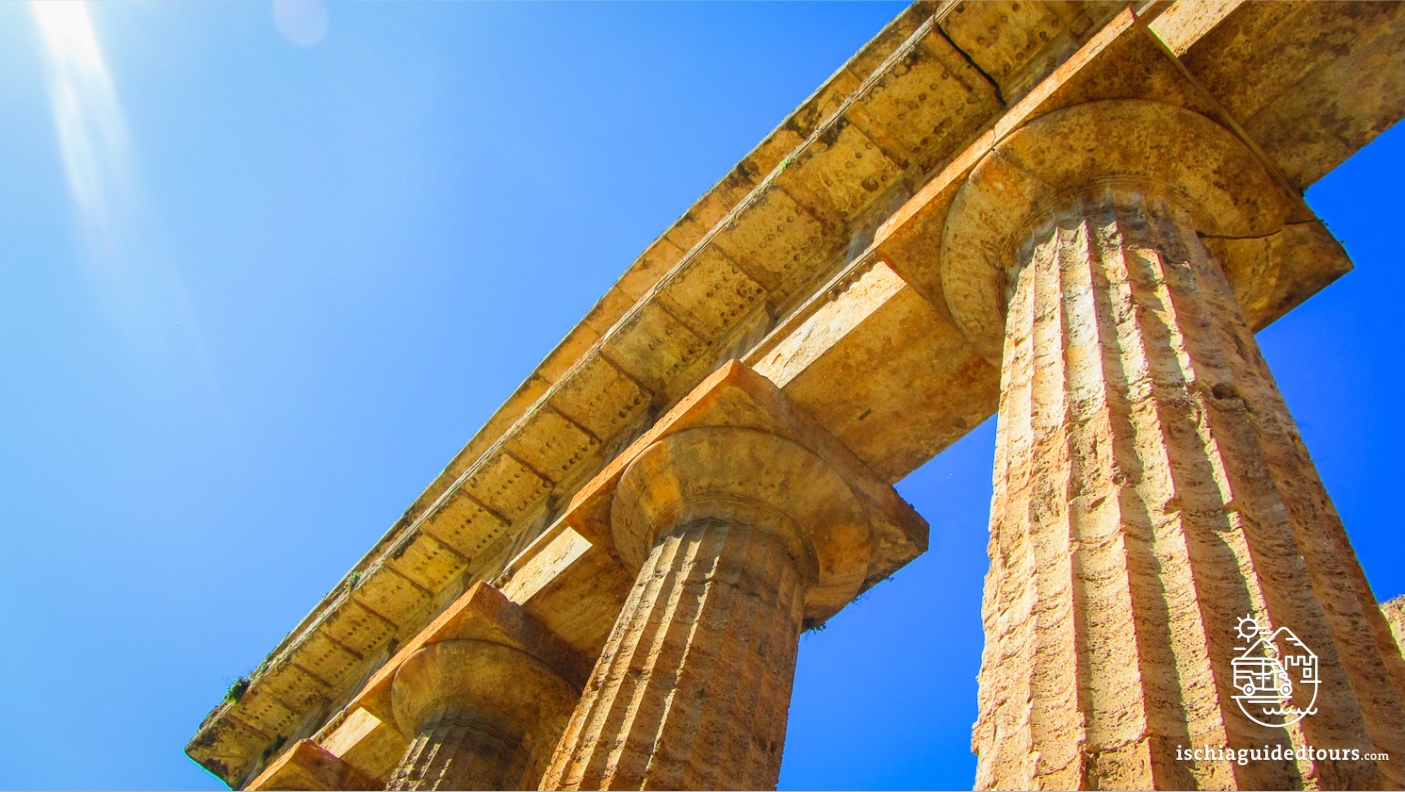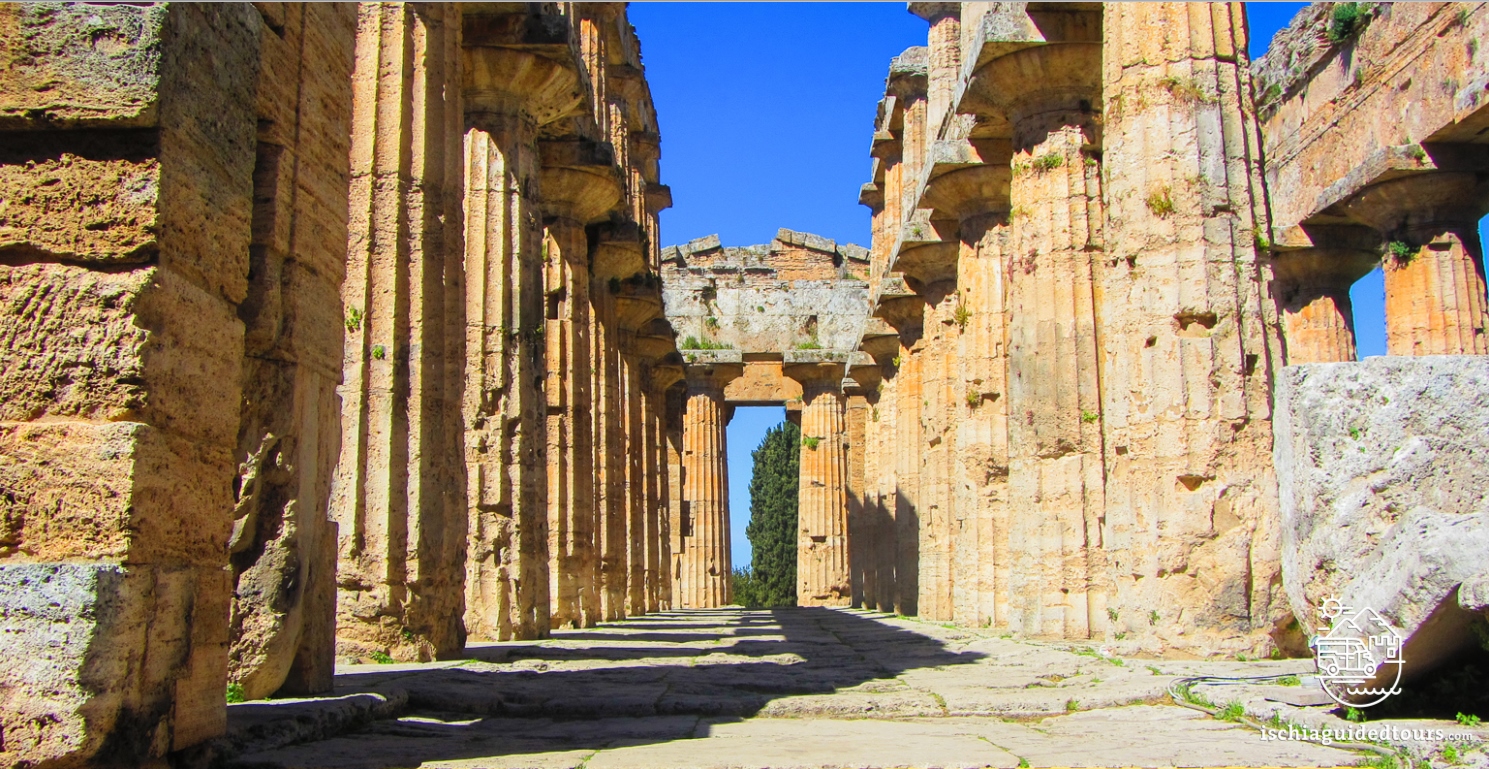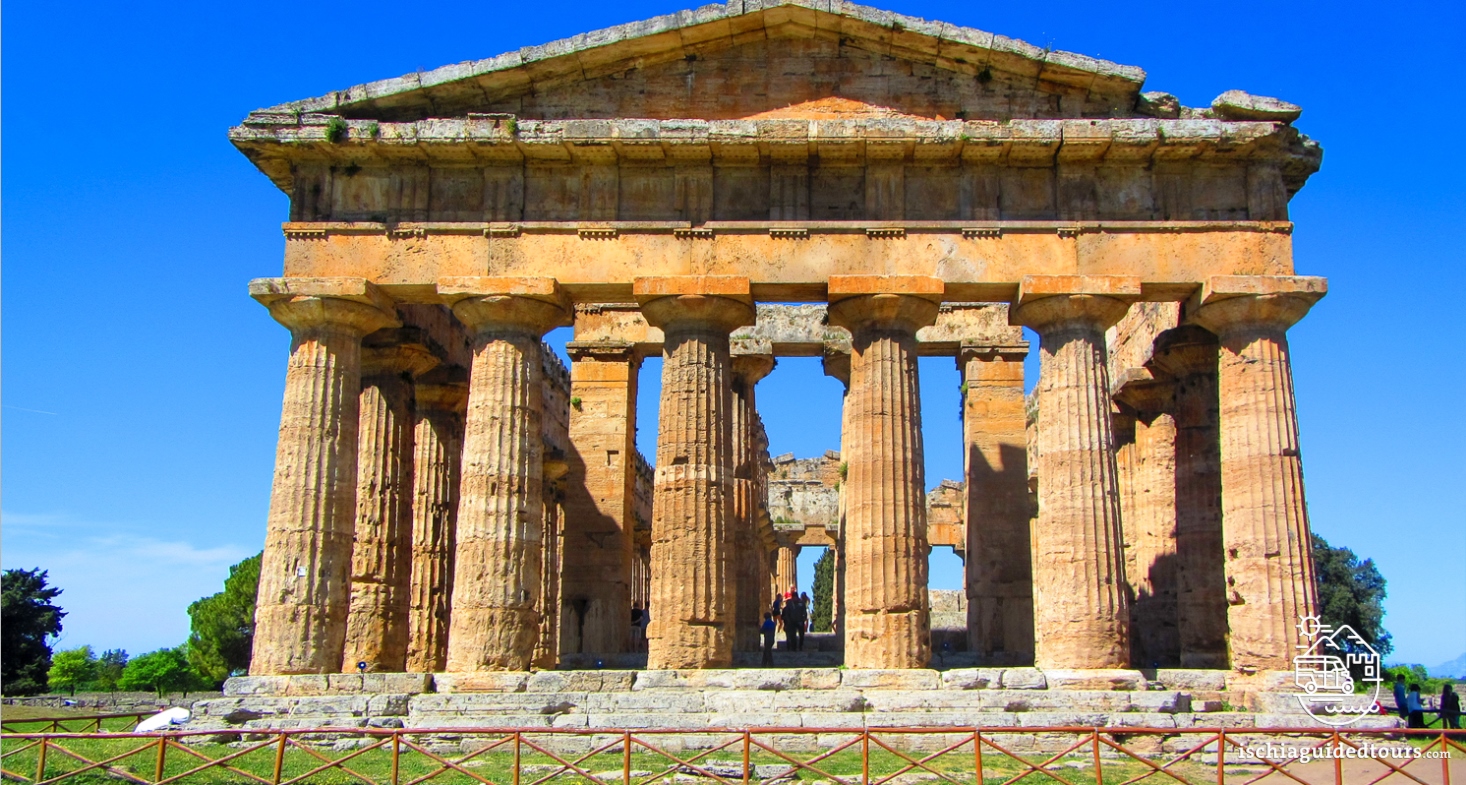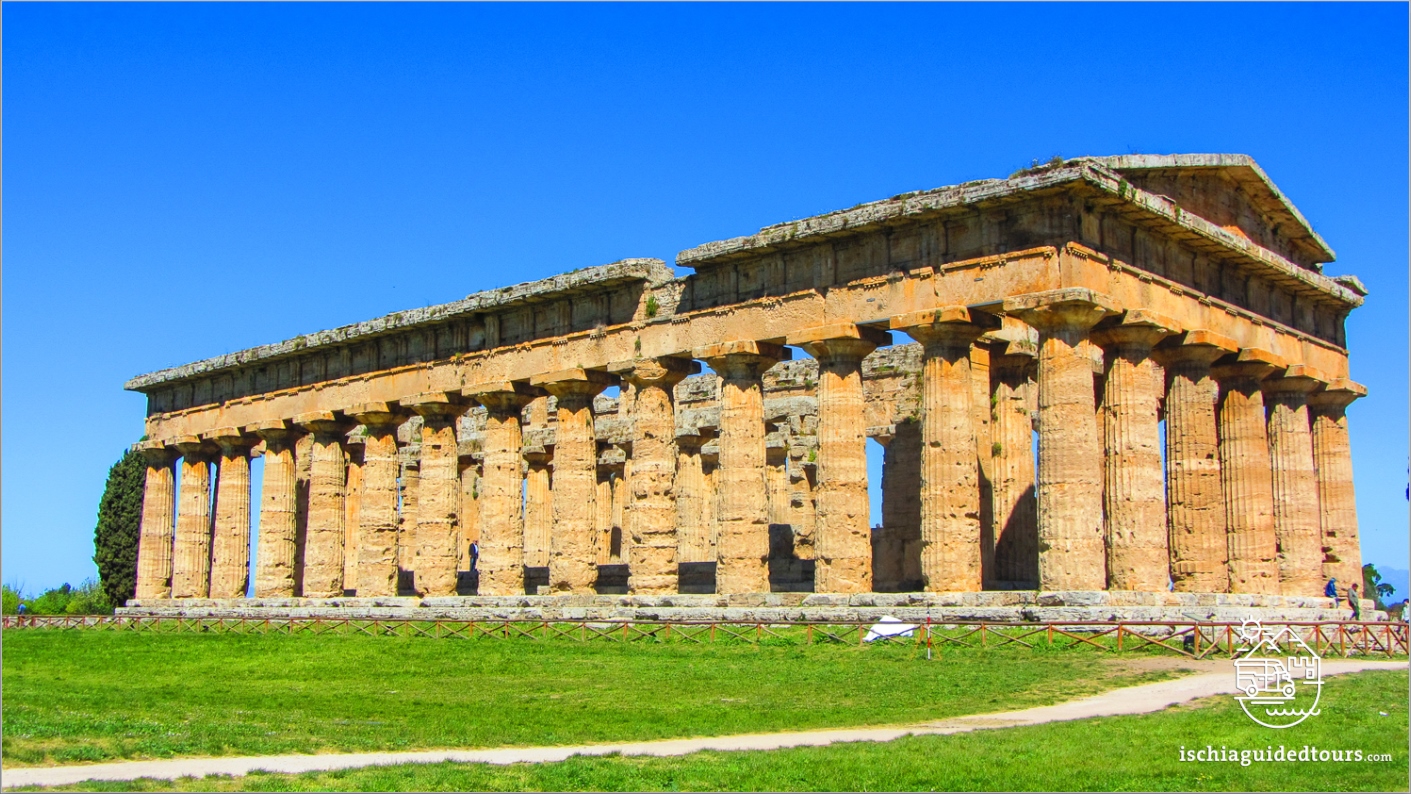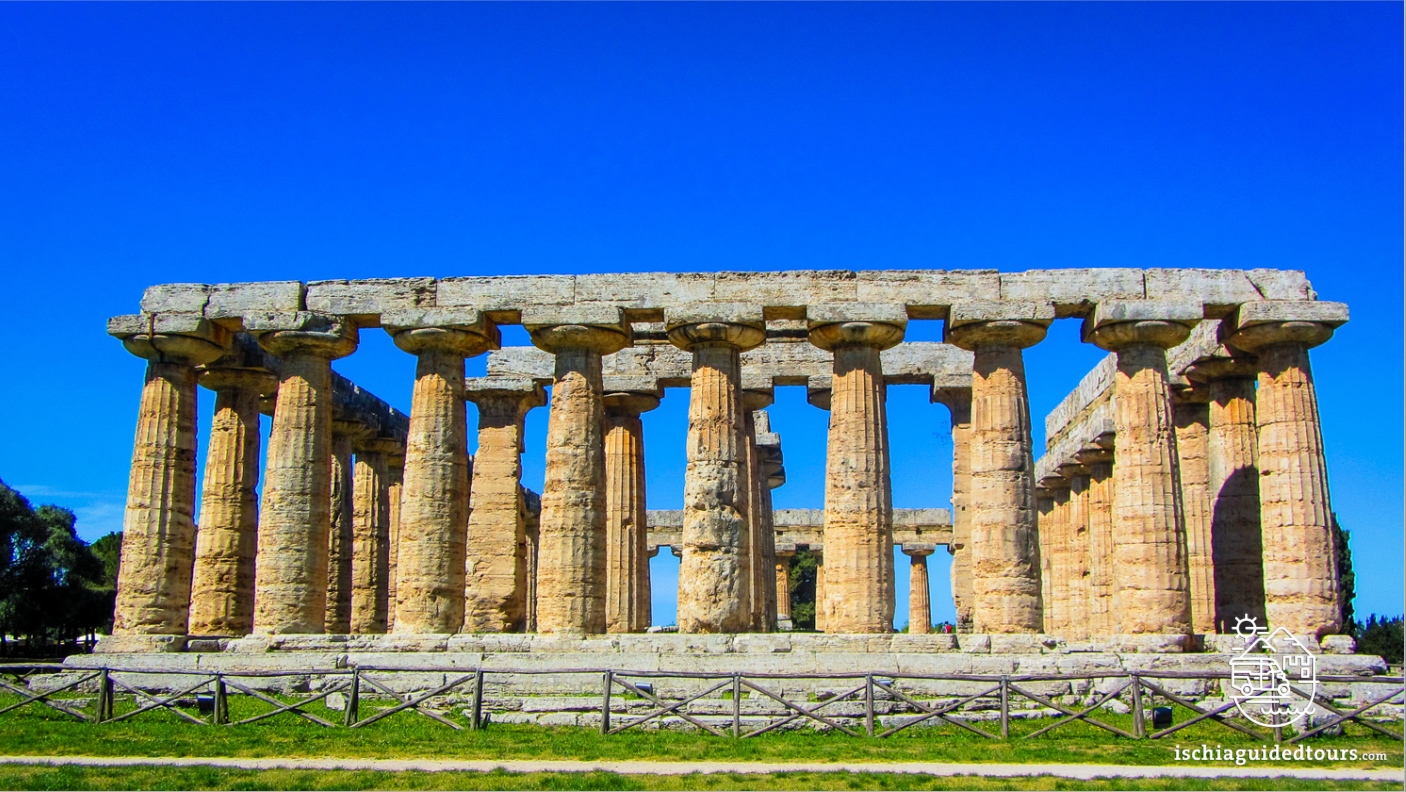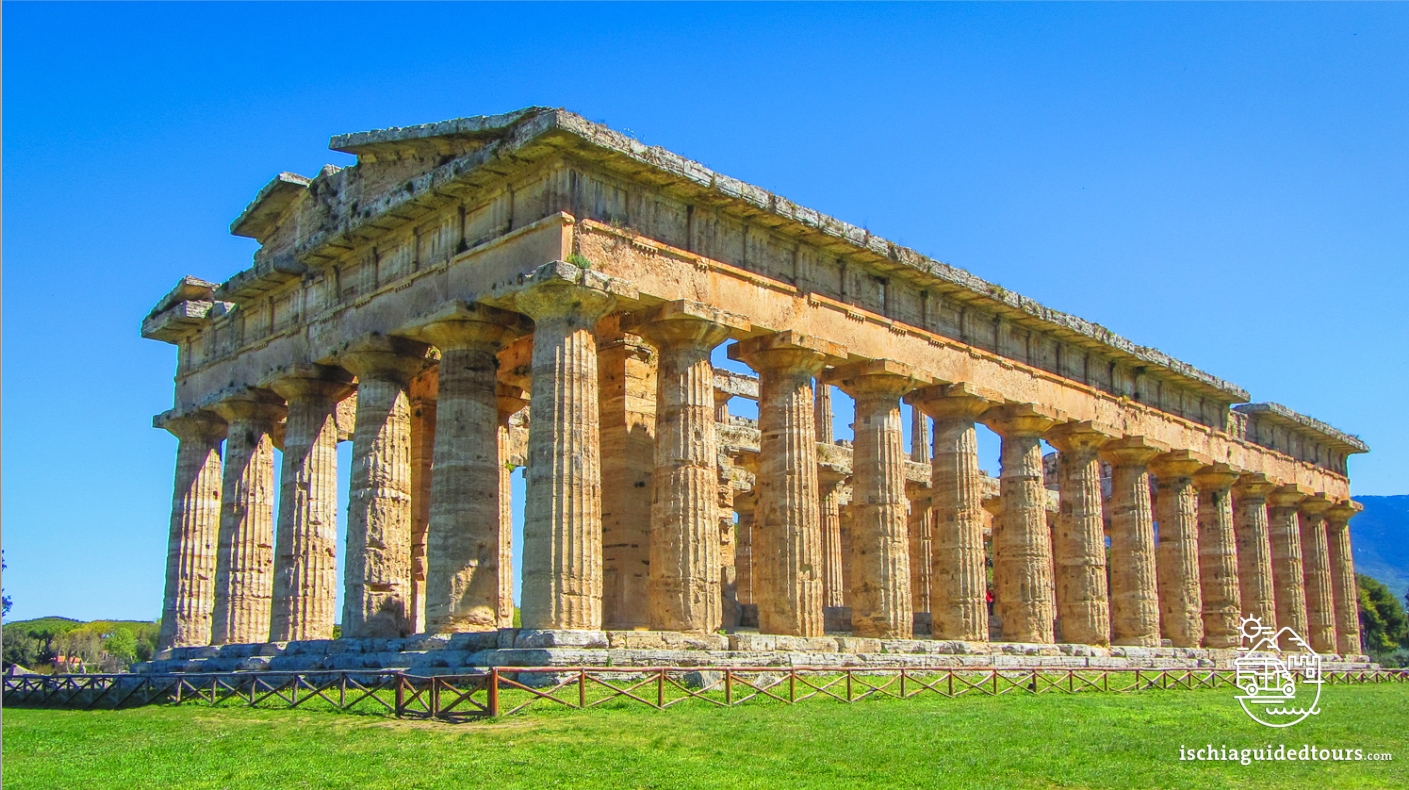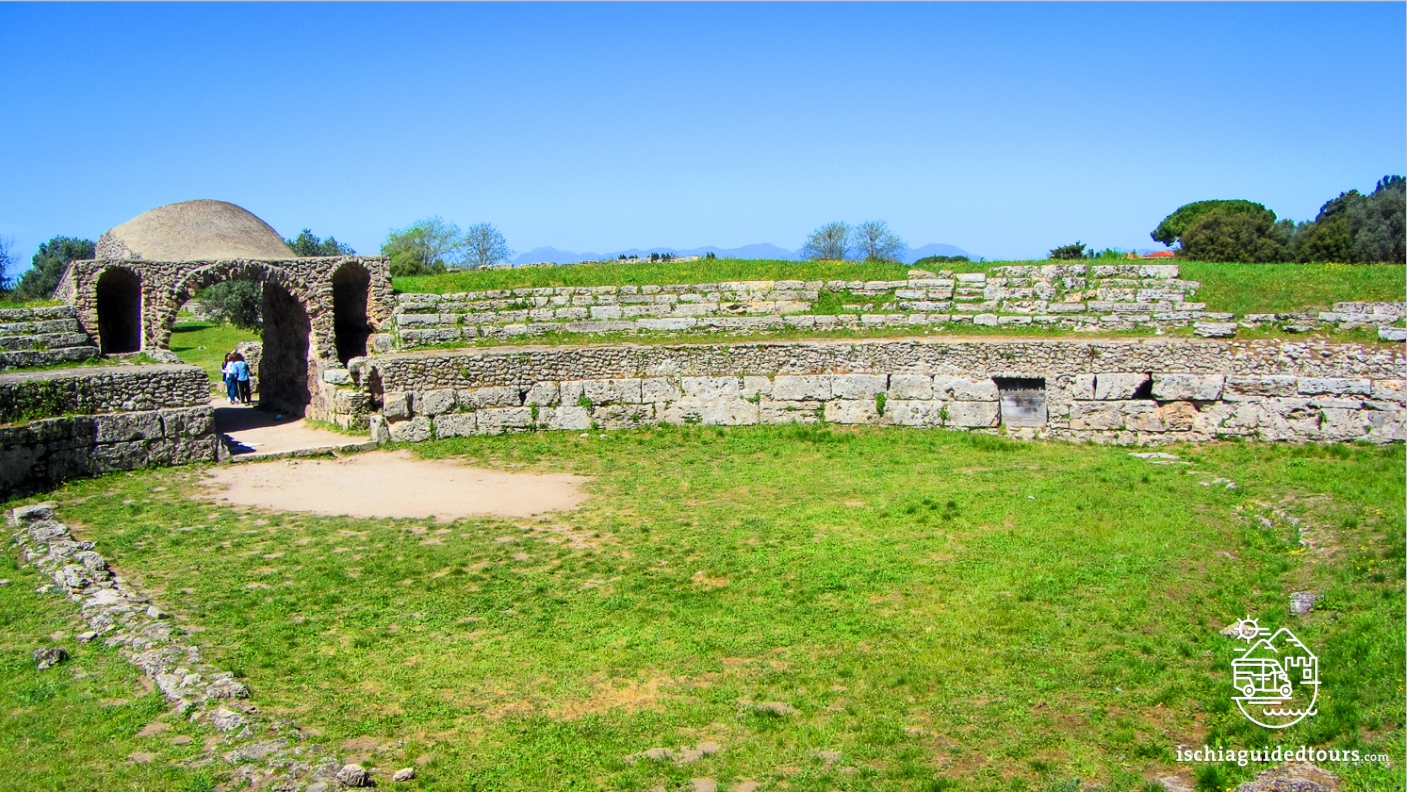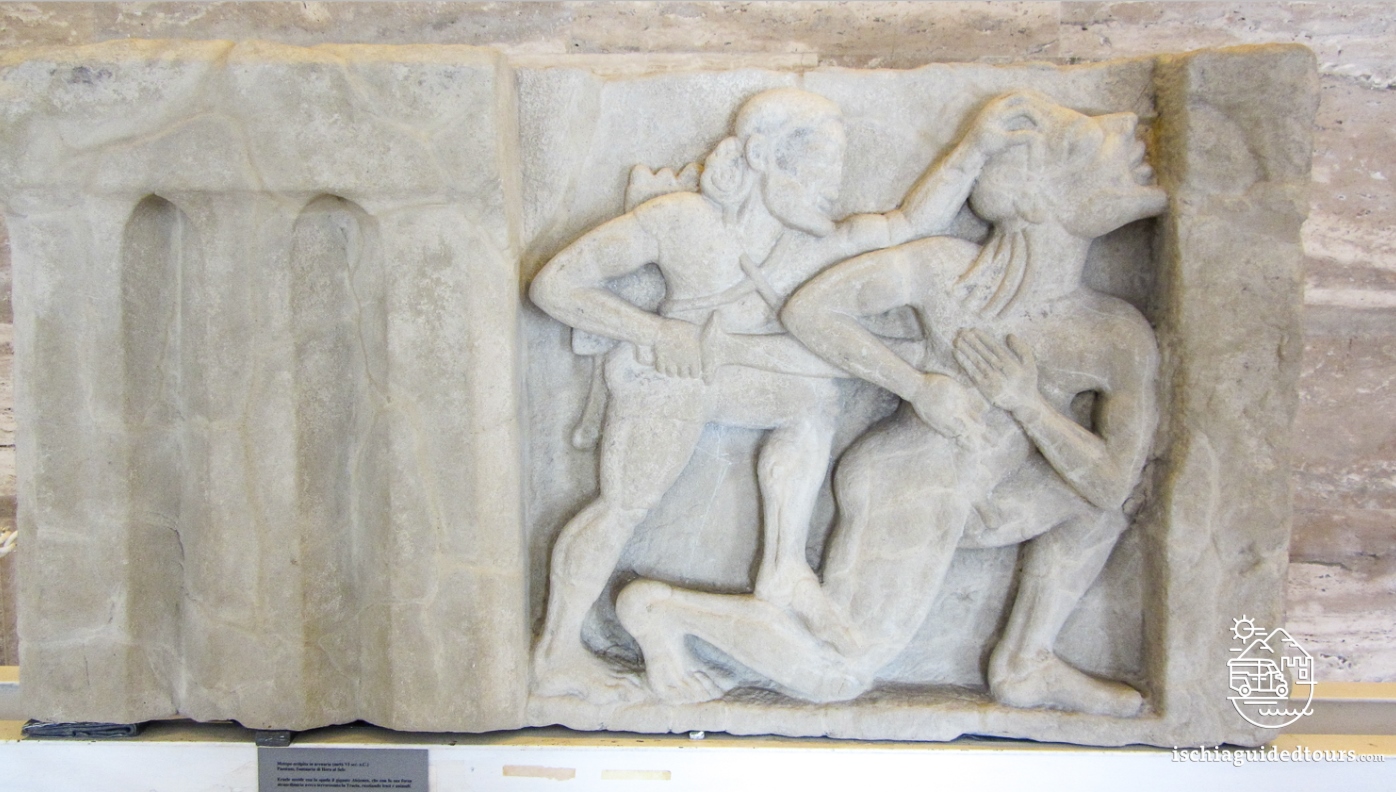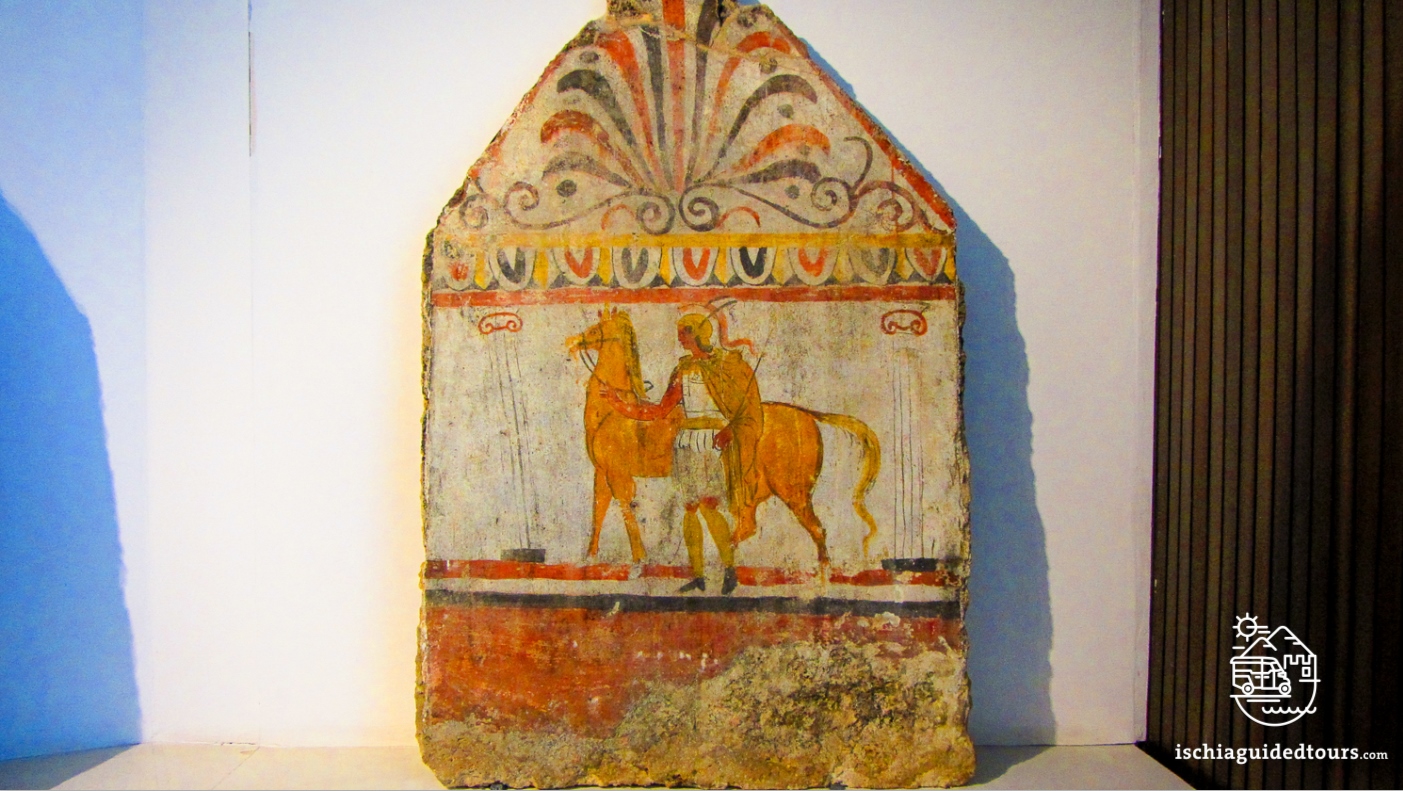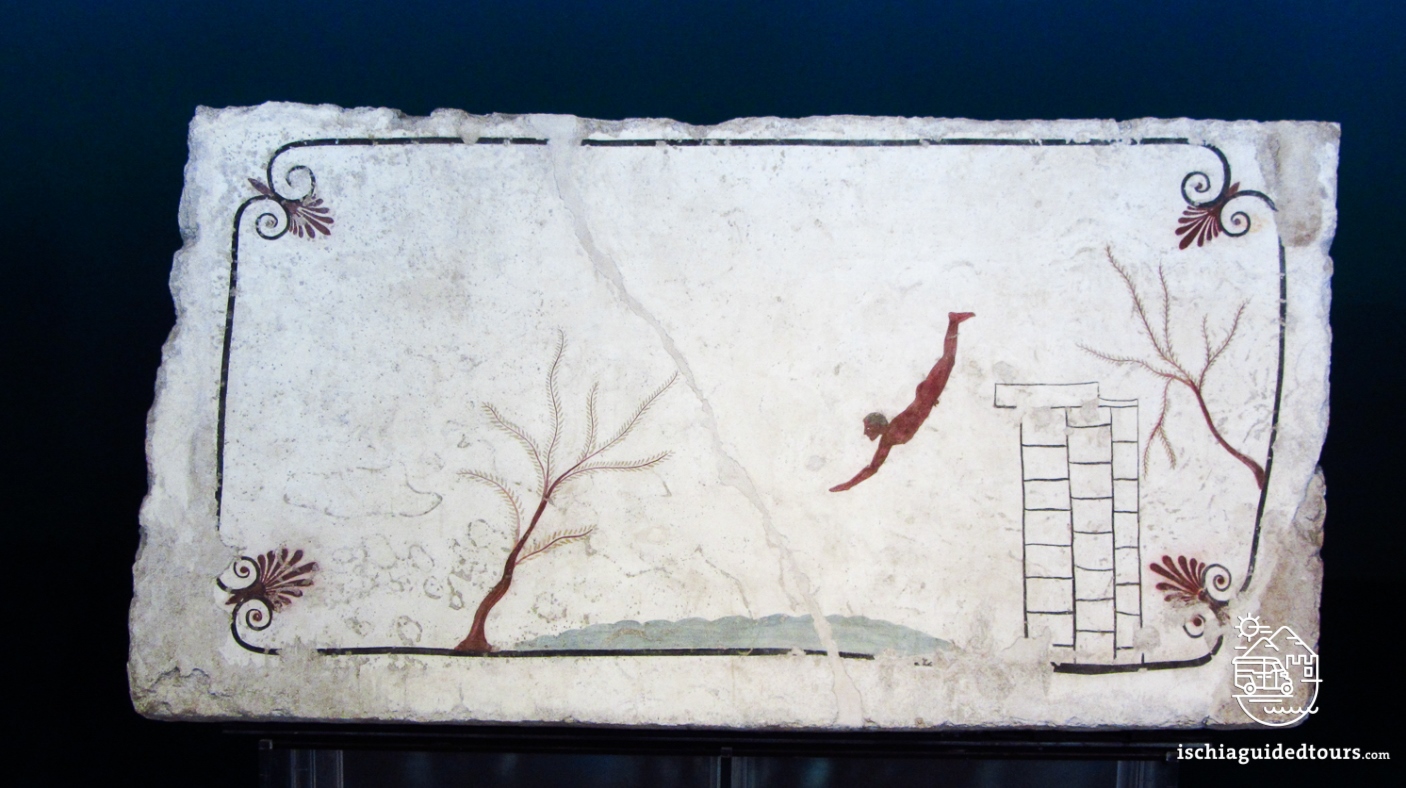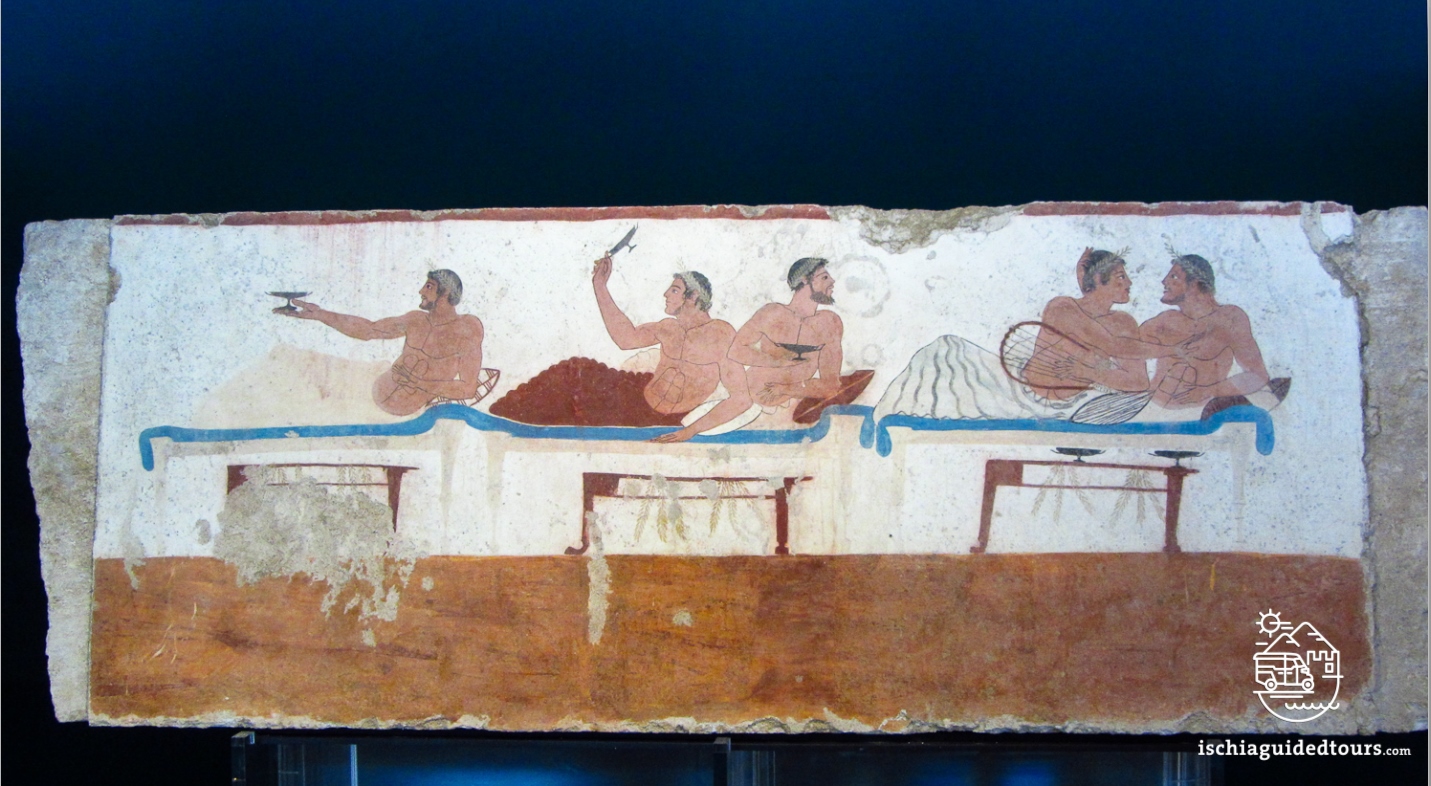The archaeological site of Paestum or Poseidonia, as the ancient Greeks named it, is located in the beautiful, green valley of Cilento,100 kms south of Naples and it is famous worldwide for its impressive and well preserved Greek temples.
The ancient Poseidonia, named in honour of the god of the sea Poseidon, was founded in the VII century B.C. by Greek settlers from Sibaris, another Greek colony in the south of Italy. Poseidonia was an important and rich city, founded on a fertile plain near the river Sele, on the coast of the Tirrenean Sea, from where trade and exchanges were carried out. The best testimonies to the city’s wealth are the three Doric temples, built in the VI and the V centuries B.C., that are among the most beautiful monuments of ancient times. The oldest of the three temples is the Temple of Hera (also called Basilica), dedicated to the goddess of fertility and maternity. Next to the Temple of Hera stands the Temple of Neptune (or Poseidon), one of the oldest and best preserved temples of Magna Graecia. The third great temple is the one dedicated to Athena (or Ceres) and it represents a unique case of two different architectural styles (Doric and Ionic) used in the same temple.
In the IV century the city changed its name to Paistom when it was conquered by an Italic tribe, the Lucanians. In the III century B.C. the Romans took over and named it Paestum. The Romans added more temples and buildings and Roman ruins are still visible in the archaeological site. Beautiful artefacts found in the area, like pottery, statues and spectacular painted tombs with precious decorations (such as “The tomb of the diver”, a rare example of a Greek painted tomb), are now stored in the archaeological museum onsite.
The area of Paestum is also famous for the production of the Campania buffalo mozzarella, labelled with a special certificate of quality. There are many “caseifici” (cheese-factories) nearby where you can stop for food tasting and to buy the best mozzarella in the world!
Enjoy a day among art, history and culture, contact me info@ischiaguidedtours.com for a tailor made tour to discover the beautiful site of Paestum!
